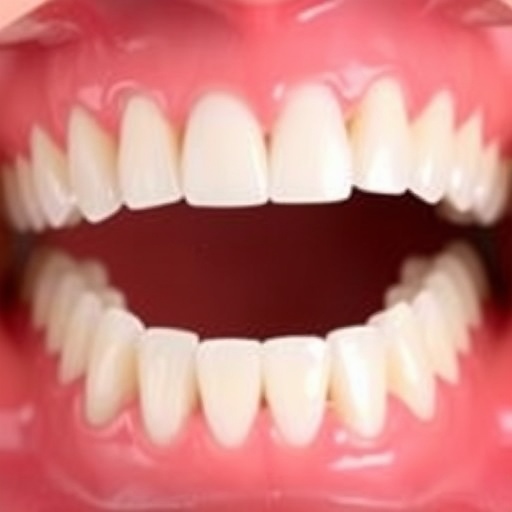In the ever-evolving landscape of dental education, understanding the perceptions of dental students regarding facial and smile aesthetics has become increasingly crucial. A recent study sheds light on these perceptions, exploring the influence of various factors such as gender, education level, and family background on dental students’ views. This research highlights the complex interplay between personal experiences and professional training in the field of dentistry, ultimately setting the stage for improved educational approaches and patient care practices.
The study in question, conducted by an esteemed team of researchers, aims to uncover how dental students from diverse backgrounds perceive key aesthetic qualities in facial structure and smiles. As the importance of aesthetic dentistry continues to capture public interest, comprehending the foundational views of future dental professionals is essential. This understanding can lead to refined educational methodologies that foster an appreciation for both technical proficiency and the art of creating pleasing smiles.
Gender differences often shape how aesthetics are perceived in various domains, including dentistry. In the research, a significant focus was placed on contrasting male and female dental students’ attitudes towards facial attractiveness and smile design. The implications of these differences are profound: they could directly guide curriculum development to encompass a more inclusive understanding of aesthetic principles, ensuring that all students, regardless of gender, graduate with a balanced skill set.
Moreover, the influence of education level on aesthetic perception cannot be understated. As dental students progress through their training, they accumulate a wealth of knowledge and skills that influence their approach to aesthetics. This study investigated whether those at different stages of their education—such as first-year students versus those nearing graduation—exhibit varied perceptions of an aesthetically pleasing smile. Such insights may inform educators as they devise strategies to integrate more hands-on experience in aesthetics throughout the dental curriculum.
Family background is another critical element affecting students’ perceptions of beauty and aesthetics. With diverse upbringings leading to variations in beauty standards, the study explores how these formative experiences shape future dental practitioners’ ideals of treatment. By examining this factor, educators can better understand their students, paving the way for a more tailored educational experience that respects and reflects the backgrounds of those learning the art of dentistry.
The findings suggest that dental schools should take an active role in addressing the varied perceptions stemming from these personal backgrounds. By fostering discussions about aesthetics that encompass multiple perspectives, institutions can cultivate an inclusive environment that respects individual experiences while promoting a holistic approach to dental artistry.
In the context of a globalized world, understanding these varying perceptions becomes all the more critical. As patients from different cultures and backgrounds seek dental care, practitioners must be equipped to cater to a diverse clientele. This study serves as a reminder that education in aesthetics is not merely about technical skill but also about cultural competence and interpersonal understanding.
Equipped with insights from this research, dental schools could implement workshops and training programs that delve into the nuances of facial and smile aesthetics, addressing the identified gaps related to gender, education level, and family background. Such initiatives will not only enhance students’ technical abilities but will also deepen their empathy towards patients, leading to more personalized care.
Additionally, ongoing evaluation of students’ evolving perceptions throughout their education could inform future studies. Such a longitudinal approach would provide more nuanced data on how perceptions shift as students gain experience and exposure to real-world practice. This could, in turn, lead to continuous improvements in educational frameworks, ensuring that dental training remains responsive to emerging trends and societal changes.
The broader implications of this study extend beyond the confines of academia into public health policy. As aesthetic considerations become increasingly prioritized in dental practices, this research underscores the need for a multidisciplinary approach that integrates psychological, social, and educational perspectives on aesthetics in dentistry.
Ultimately, the findings urge a reevaluation of existing dental curricula to incorporate aesthetics as a core competency, rather than a peripheral topic. As dental professionals bridge the gap between technical skill and aesthetic appeal, a collaborative, understanding-based framework will be pivotal in shaping the future of dental education.
Moreover, as the study demonstrates, by considering these diverse factors that influence perceptions of beauty, educators can promote diversity and inclusion within the dental profession. A future where dental practitioners emerge from a program that appreciates the richness of individual perspectives promises to enhance not only their professional satisfaction but also their capacity to meet patients’ aesthetic desires effectively.
In conclusion, this research provides a compelling look into the perceptions dental students hold regarding facial and smile aesthetics. Addressing the significant impact of gender, education level, and family background will undoubtedly shape the future of dental education, leading to a generation of practitioners who are not only skilled in their craft but also deeply attuned to the diverse needs of their patients. As the dental field continues to evolve, such studies will play a crucial role in developing well-rounded professionals who can appreciate the intricate balance of art and science in creating beautiful smiles and fostering patient satisfaction.
Subject of Research: The perceptions of dental students about facial and smile aesthetics and the impact of gender, education level, and family background.
Article Title: Assessment of dental students’ perceptions of facial and smile aesthetics: impact of gender, education level, and family background.
Article References:
Sesen, P., Tokaç, S.O., Kaffaf, M.B. et al. Assessment of dental students’ perceptions of facial and smile aesthetics: impact of gender, education level, and family background.
BMC Med Educ 25, 1350 (2025). https://doi.org/10.1186/s12909-025-07931-z
Image Credits: AI Generated
DOI: 10.1186/s12909-025-07931-z
Keywords: dental students, facial aesthetics, smile aesthetics, gender differences, educational influences, family background, dental education, cultural competence.




